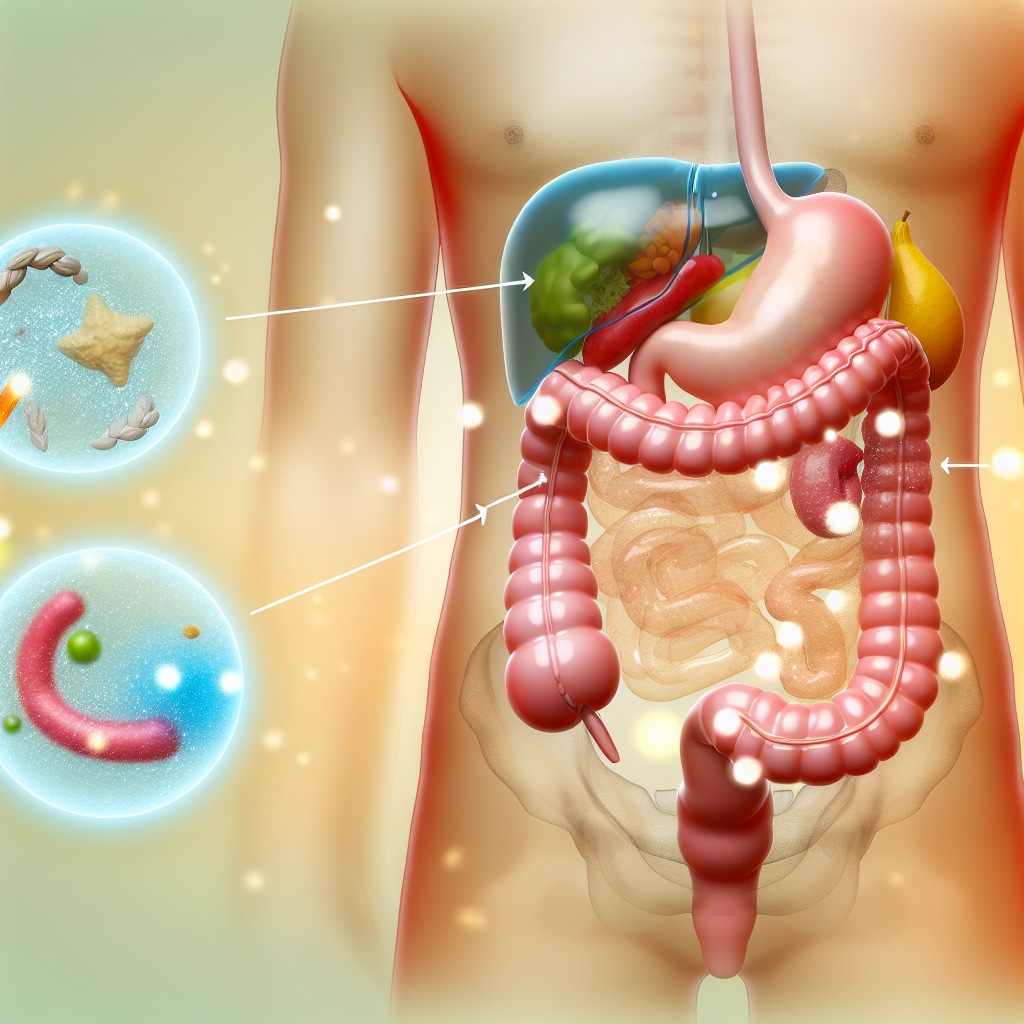Here is the blog post with the requested changes:
Seasonal Eating and Your Gut Microbiome: How Nature Shapes Digestion
**Introduction**
The ancient practice of seasonal eating—consuming foods naturally harvested during specific times of the year—has gained new traction in modern wellness circles, especially among those focused on natural gut health. As science delves deeper into the human microbiome, emerging evidence suggests that the foods we eat throughout the year profoundly influence the diversity and balance of the trillions of bacteria residing in our gut. These tiny microbes play a critical role in not only digestion but immunity, inflammation regulation, and even mental well-being.
Seasonal eating aligns with the natural availability of fruits, vegetables, herbs, and other crops, offering a varied diet throughout the year. Spring might provide tender greens like arugula and asparagus, summer bursts with berries and tomatoes, autumn yields squash and root vegetables, while winter promotes reliance on fermented foods and hearty legumes. This cyclical variation may nurture a more resilient and diverse gut microbiome, giving your digestive system the nutrients it needs to thrive as environmental and bodily needs shift with the seasons.
Modern diets, high in processed foods and low in microbiome-supporting fibers and polyphenols, often lack the diversity needed to maintain microbial balance. This imbalance, or “dysbiosis,” has been linked to numerous conditions—from irritable bowel syndrome (IBS) and obesity to autoimmune diseases and depression. Conversely, diversity in dietary fibers and polyphenols, which naturally occurs when following seasonal food patterns, helps feed a more varied population of beneficial gut microbes.
Traditional medical systems such as Ayurveda and Traditional Chinese Medicine (TCM) have long promoted eating in harmony with seasonal cycles to optimize organ function, including digestion. Today, science is finally catching up, offering a fascinating lens through which to reimagine our daily meals—not just as sustenance, but as a form of microbial communication and gut healing.
For individuals seeking natural, herbal-based approaches to gut health, adopting seasonal eating patterns offers a simple yet powerful strategy to support microbial well-being. Combined with medicinal herbs unique to each season, nature provides a blueprint for digestive wellness that is beautifully intuitive and scientifically sound.
Microbes That Shift with the Seasons: Scientific Proof of Nature’s Impact
Recent research has increasingly highlighted the dynamic relationship between seasonal eating and gut microbiota diversity. A groundbreaking study published in the journal Science followed the Hadza hunter-gatherers of Tanzania, whose diet fluctuates wildly in composition according to seasonal food availability. The researchers found that the Hadza’s gut microbial diversity changed significantly with the seasons, with certain bacterial strains appearing and disappearing depending on dietary inputs. This kind of microbial flexibility is considered critical to long-term gut health and may protect against diseases caused by microbial stagnation.
A 2020 study in Cell Reports took these findings further by demonstrating that Western-style diets, which lack seasonal variation, are correlated with reduced microbial diversity and functionality. This makes a compelling argument for reintroducing seasonal freshness and variety into the modern menu.
Why Eating with the Earth Boosts the Gut: Fiber, Polyphenols & Bacteria
Notably, seasonal vegetables are rich in different types of prebiotic fibers and polyphenols. Spring greens such as dandelion and chicory are high in inulin, a prebiotic fiber that selectively feeds Bifidobacteria, known for their anti-inflammatory benefits.
Summer’s bounty of berries and stone fruits offers polyphenols like anthocyanins and quercetin, which support the growth of anti-pathogenic bacteria while regulating inflammation. Rhubarb and artichokes, often found in early summer, contain sennosides and cynarin respectively, which not only stimulate bile production but also support liver detoxification and microbial diversity.
Winter Magic: Fermented Foods to the Rescue
In colder months, fermentation tends to become an essential strategy for nutrient preservation. Traditional fermented foods like kimchi, sauerkraut, and miso—heavily consumed in winter—contain natural probiotics such as Lactobacillus and Bifidobacterium strains. These beneficial microorganisms colonize the gut and aid in restoring balance after a season of fewer fresh fruits and vegetables.
Fermentation not only adds live microbes to the digestive tract but also breaks down complex compounds, making nutrients more bioavailable and easier to digest during a time when digestion may naturally slow.
Herbs for Every Season: Nature’s Tailored Digestive Support
Herbs and spices also follow seasonal patterns, not just in growth but in their physiological effects. In hot months, cooling herbs like peppermint and cilantro aid digestion and reduce gastric inflammation. In winter, warming spices such as ginger, cinnamon, and turmeric enhance circulation, improve gut motility, and combat microbial imbalance through their antimicrobial properties.
In Ayurveda, spring marks a time for detoxification, where bitter herbs like neem and fenugreek are used to cleanse and stimulate digestion. TCM emphasizes fortifying the body during colder months with warming herbs like garlic and astragalus to strengthen the “digestive fire,” or qi, especially when sunlight and fresh foods are in short supply.
How to Begin: Practical Tips for Seasonal Gut Health
– Shop at local farmers markets for the freshest in-season produce.
– Incorporate seasonally appropriate herbs into teas, broths, and meals.
– Add fermented foods like sauerkraut, yogurt, and miso to winter menus.
– Rotate your fiber sources—switch up greens, roots, fruits, and legumes every few weeks.
– Avoid processed foods and try to reduce reliance on out-of-season imports.
– Observe traditional health wisdom related to seasonal eating cycles for your region.
The Natural Symphony of Gut and Season: A Holistic Conclusion
Nature has long provided cues for optimal nutrition and gut health, visible in the cyclic bounty of the seasons. Seasonal eating not only supports local ecosystems and sustainability efforts but may be one of the most intuitive and evidence-based approaches to enhancing gut microbiome diversity. When combined with seasonally appropriate herbs and naturally fermented foods, this practice becomes a powerful tool to nourish and heal the gut holistically.
By embracing the rhythm of nature’s pantry, we can fortify our internal ecosystems to improve digestion, immunity, and overall well-being. So the next time you plan your meals, let the season’s harvest guide your plate—and your microbes will thank you.
**Concise Summary**
Seasonal eating aligned with nature’s cycles supports a diverse and resilient gut microbiome. Seasonal produce, herbs, and fermented foods provide the fiber, polyphenols, and probiotics needed to nourish beneficial gut bacteria and improve overall digestive health.
**References**
– Sonnenburg, E. D., & Sonnenburg, J. L. (2019). “Starving our Microbial Self: The Deleterious Consequences of a Diet Deficient in Microbiota-Accessible Carbohydrates.” Cell Metabolism, 20(5), 779-786. [Read More](https://www.cell.com/cell-metabolism/fulltext/S1550-4131(14)00400-6)
– Smits, S. A., et al. (2017). “Seasonal cycling in the gut microbiome of the Hadza hunter-gatherers of Tanzania.” Science, 357(6353), 802-806. [Read More](https://www.science.org/doi/10.1126/science.aan4834)
– Kaczmarek, J. L., et al. (2019). “Diet and the gut microbiota: The gut microbiome regulates dietary fiber metabolism and metabolic health.” Current Nutrition Reports, 8(3), 146–156. [Read More](https://link.springer.com/article/10.1007/s13668-019-00274-0)
– De Filippis, F., et al. (2016). “High-level diversity of the human gut microbiota and its association with diet.” Journal of Nutrition, 146(1), 70–75. [Read More](https://academic.oup.com/jn/article/146/1/70/4584892)
– Venter, C. S., et al. (2020). “The impact of dietary polyphenols on gut microbiota: A focus on fiber-rich and fermented wholefoods.” Nutrition Research Reviews, 33(2), 236-256. [Read More](https://www.cambridge.org/core/journals/nutrition-research-reviews/article/abs/impact-of-dietary-polyphenols-on-gut-microbiota-a-focus-on-fiberrich-and-fermented-wholefoods/)

Dominic E. is a passionate filmmaker navigating the exciting intersection of art and science. By day, he delves into the complexities of the human body as a full-time medical writer, meticulously translating intricate medical concepts into accessible and engaging narratives. By night, he explores the boundless realm of cinematic storytelling, crafting narratives that evoke emotion and challenge perspectives.
Film Student and Full-time Medical Writer for ContentVendor.com




